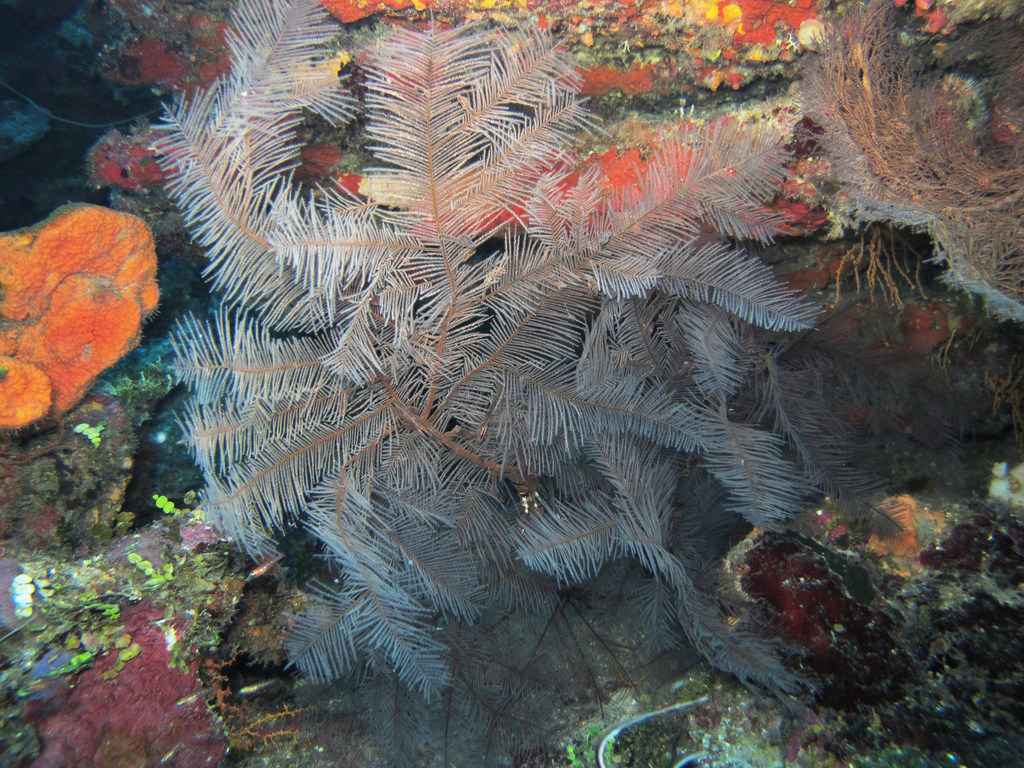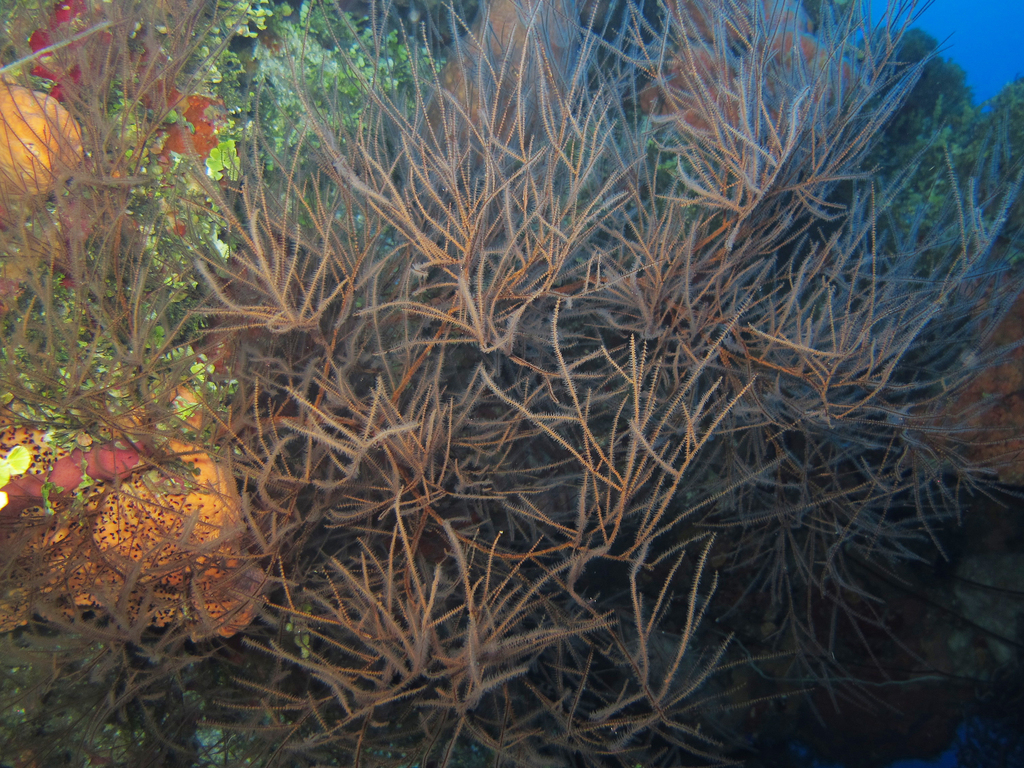Behind the science:
Assessing population changes of historically overexploited black co...
2018, July 17
Posted by Veronica Radice
Fields
Community structure
Management and Conservation
Ecology
Focusgroups
Antipatharia (Black Corals)
Locations
Mexico - Caribbean Sea
Platforms
SCUBA (open-circuit or unspecified)
“Population changes of historically overexploited black corals in Mexico”
What was the most challenging aspect of your study (can be anything from field, lab to analysis)?
Currents in the west side of Cozumel are particularly strong and variable, making them difficult to predict. In order to obtain precise measurements of the height and width of black corals using the EventMeasure software, clear footage of the colonies is indispensable. Slowing down, or swimming against current while keeping the cameras in the right position was rather challenging sometimes.
What was the most memorable moment in undertaking this study?
Finding black coral colonies of relevant size (~ 1.3 m height) on MCEs where shallow adjacent reefs are highly deteriorated was a memorable and reassuring moment. I remember the captain being reluctant to drop us off on the site that I named ‘Purgatorio’ and saying: ‘why you do want to dive there, can’t you see there are no reefs there?’. It was true for shallow reefs, but as soon as we reached +50 m, one of the first things we saw was a big colony of Plumapathes pennacea on well-developed MCEs. That was memorable!
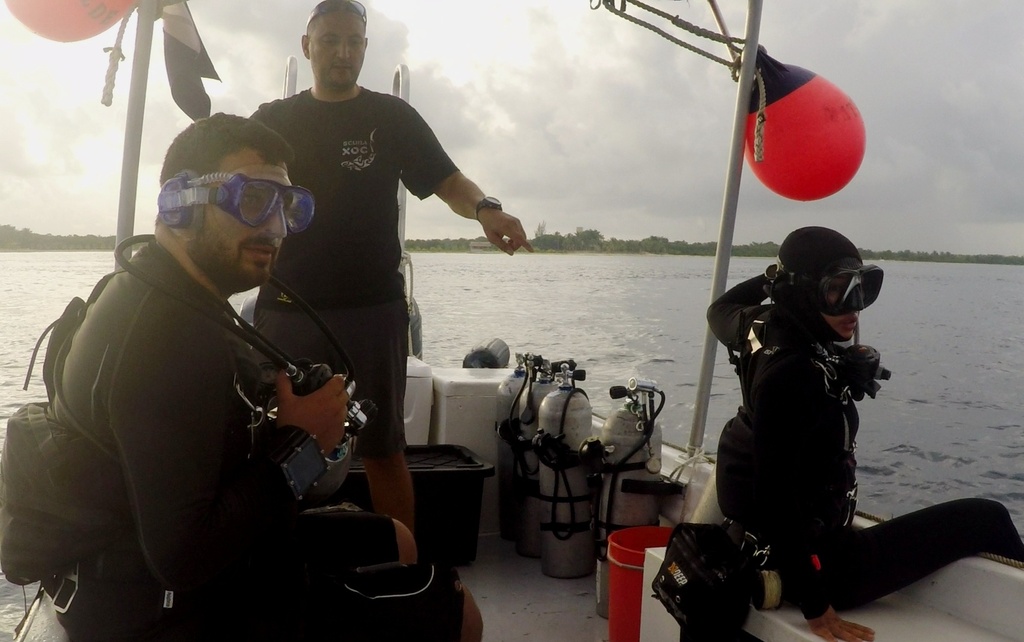 Erika Gress & Dominic Andradi-Brown getting ready for a dive
(C) Gina Wright
[CC BY-NC 4.0]
Erika Gress & Dominic Andradi-Brown getting ready for a dive
(C) Gina Wright
[CC BY-NC 4.0]
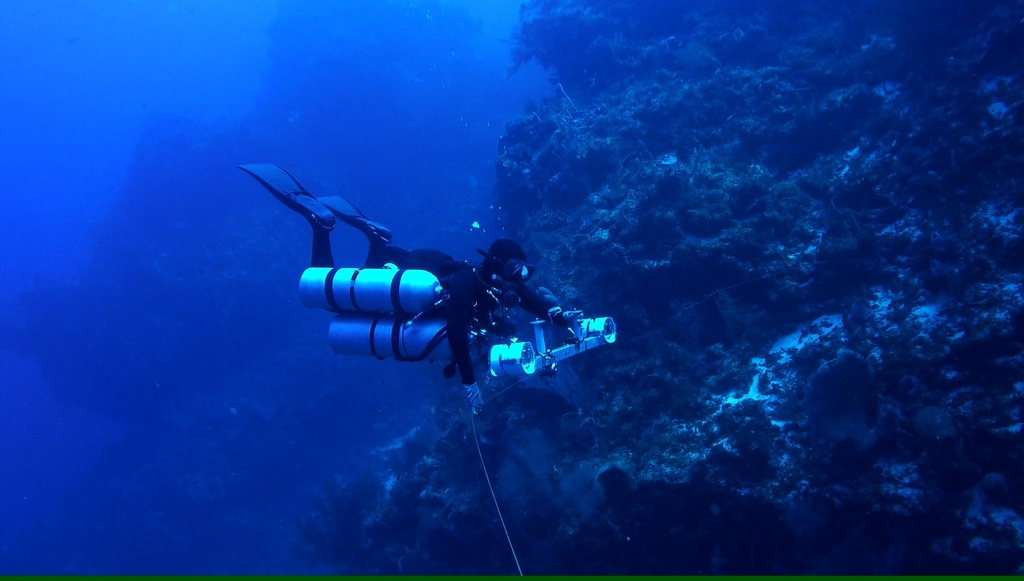 Erika Gress filming a transect with the stereo-DOV at 55 m at the site Palancar Jardines
(C) Dominic Andradi-Brown
[CC BY-NC 4.0]
Erika Gress filming a transect with the stereo-DOV at 55 m at the site Palancar Jardines
(C) Dominic Andradi-Brown
[CC BY-NC 4.0]
What was your favorite research site in this study and why?
My favourite research site was Palancar Jardines, one of the sites further south of the island. MCEs there are stunningly colourful and complex (structure wise). We found the sites further south to have higher diversity and abundance of benthic organisms, including scleractinian corals, black corals and sponges; and fish as well. More research is still needed to determine if such pattern is due to their latitudinal position, their distance form the main town or due to particular environmental parameters.
Other than your co-authors, with whom would you like to share credit for this work?
I appreciate the support offered by Kiragu Mwangi, Stuart Paterson and Christina Imrich from Conservation Leadership Programme (CLP) throughout the whole process of this study. Gina Wright and Maria Arroyo were the shallow team support during field work. I thank Claudia Padilla and team, who conducted the first black coral studies in the Mexican Caribbean back in 1998. Cristopher Gonzales and Blanca Quiroga from the Cozumel Marine Park (CONANP) have been cooperative and willing to advance research and protection of black corals in Cozumel. Also, I am grateful to Alex Rogers (University of Oxford) for his support and encouragement.
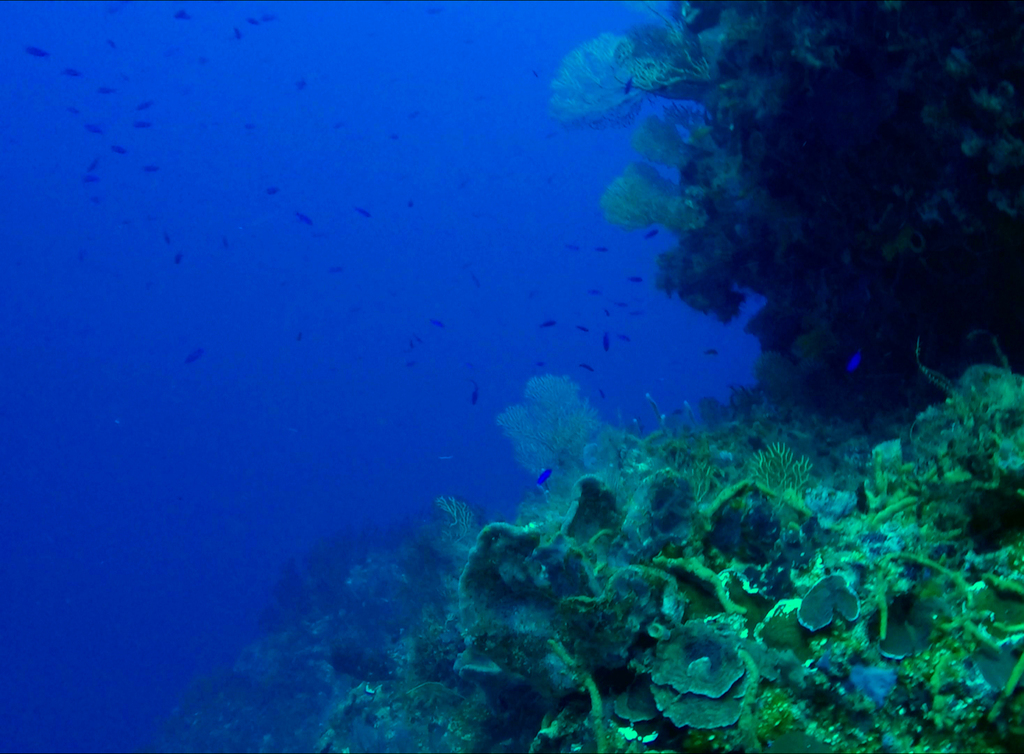 Palancar Jardines site at 55 m depth
(C) Erika Gress
[CC BY-NC 4.0]
Palancar Jardines site at 55 m depth
(C) Erika Gress
[CC BY-NC 4.0]
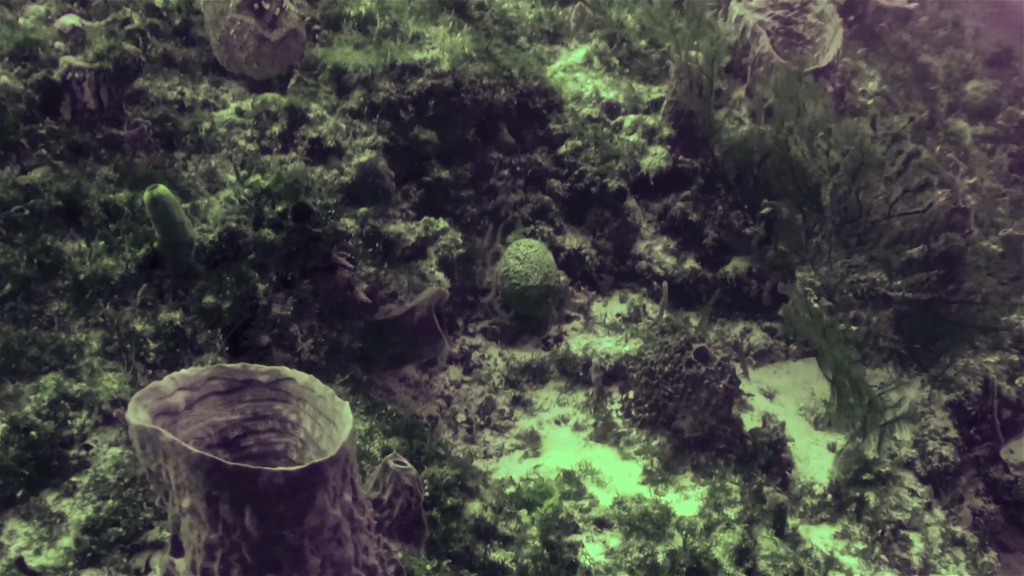 Dive site 'Purgatorio' at 55 m depth
(C) Erika Gress
[CC BY-NC 4.0]
Dive site 'Purgatorio' at 55 m depth
(C) Erika Gress
[CC BY-NC 4.0]
Any important lessons learned (through mistakes, experience or methodological advances)?
Precisely because of the strong currents, the technique of reeling (out and in) a transect tape to determine distance of transects and quadrats position for benthic communities assessment couldn’t be used. We had to use biodegradable pre-marked thread which required a lot of time to prepare before each dive. It would be ideal to have access to an electronic apparatus that could indicate us, in real time, the distance (cm/m) we have travel underwater.
Can we expect any follow-up on this work?
Absolutely! This study also highlights all the information gaps on black corals physiology, functional traits and population dynamics. There is still a lot to be done in order to advance our understanding of black corals, and then we have to use the information to achieve better management. Fortunately, I will be collaborating and learning more about black corals physiology and functional traits as part of the Conservation Biology of Black Corals (COBICO) project – University of Mons, Belgium. This project will also look into options for sustainable exploitation of black corals through their aquaculture and farming; techniques that could also be used for restoration purposes.
Featured article:
|
|
Assessing population changes of historically overexploited black corals (Order: Antipatharia) in Cozumel, Mexico | article Gress E, Andradi-Brown DA (2018) PeerJ 6:e5129 |

|
.png)
